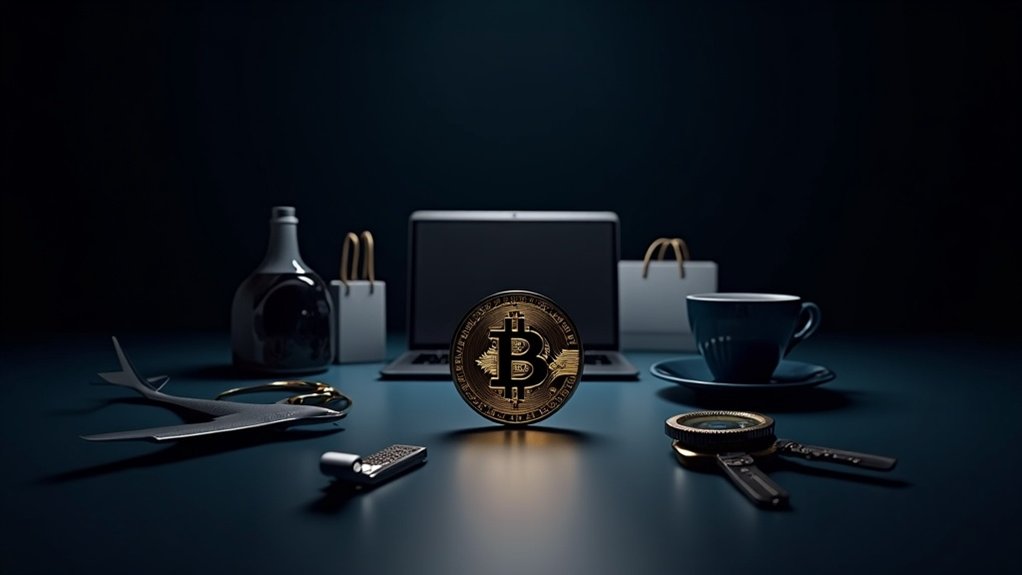Dogecoin began as a joke in 2013, created by engineers Billy Markus and Jackson Palmer. Based on the Shiba Inu “Doge” meme, this cryptocurrency has no supply cap and adds 5 billion coins yearly. Despite its satirical origins, Dogecoin exploded in popularity, reaching a $2 billion market cap in 2018 and surging 7,000% in 2021. The community funds charitable causes and even helped send the Jamaican Bobsled Team to the Olympics. Not bad for an internet punchline.
How did a joke based on a dog meme become a multi-billion-dollar cryptocurrency?
In December 2013, software engineers Billy Markus from IBM and Jackson Palmer from Adobe created Dogecoin as a lighthearted jab at the cryptocurrency world.
They based it on the viral Shiba Inu “Doge” meme—you know, the one with the Comic Sans inner monologues.
What started as satire quickly became something bigger.
Much bigger.
Dogecoin isn’t just a Bitcoin clone.
It’s built on the foundations of Luckycoin (which came from Litecoin), using something called scrypt technology for its proof-of-work consensus.
Translation: you need different mining equipment than Bitcoin miners use.
The creators mined the genesis block on December 6, 2013.
They didn’t keep any coins for themselves, which seems almost naively fair in today’s crypto landscape.
Unlike Bitcoin’s limited supply, Dogecoin has no cap.
Miners can keep digging up new coins forever.
Forever!
This inflationary model adds exactly 5 billion coins to circulation each year.
This inflationary model raised eyebrows among serious crypto enthusiasts.
But who cares about economic theory when you’ve got a smiling dog on your currency?
The market has been a wild ride.
Dogecoin jumped 300% in its first three days, then crashed 80%.
Classic crypto.
By 2018, its market cap hit $2 billion, and in 2021, prices exploded 7,000%.
Thanks, Elon Musk.
What’s remarkable is the community.
The Dogecoin Foundation formed in 2014 to guide development and protect the brand.
Users embraced a culture of tipping, charity, and fundraising that separated Dogecoin from its more serious crypto siblings.
They funded Olympic athletes and charitable projects like the #CoolRunnings2 campaign that raised $30,000 for the Jamaican Bobsled Team.
Not bad for a joke.
The coin’s success inspired newer meme tokens like Shiba Inu Token to build their own ecosystems.
Despite its meme origins and Comic Sans website, Dogecoin became a gateway for cryptocurrency newcomers.
The approachable branding and active community turned what should have been a flash-in-the-pan joke into a lasting digital currency phenomenon.
Who’s laughing now?
Frequently Asked Questions
How Do I Buy Dogecoin?
To buy Dogecoin, one needs to select an exchange like Coinbase, Binance, or Kraken that supports it.
Creating an account requires identity verification—government ID, the usual drill. After linking payment methods, they can deposit funds.
Simply search for DOGE, enter purchase amount, and confirm. Pretty straightforward.
Some people prefer transferring to hardware wallets like Ledger afterward.
Crypto exchanges aren’t rocket science.
The fees vary though—Binance sits around 0.1%. Security matters.
What Makes Dogecoin Different From Bitcoin?
Dogecoin differs from Bitcoin in four key ways.
It uses Scrypt hashing (easier to mine) versus Bitcoin’s SHA-256.
Doge has unlimited supply with 5 billion new coins annually, while Bitcoin caps at 21 million total.
Transactions? Dogecoin’s way faster—1 minute blocks versus Bitcoin’s 10—with lower fees too.
And the vibe’s completely different. Bitcoin’s the serious “digital gold” while Dogecoin embraces its meme origins.
Started as a joke, now has a passionate community. Still kinda jokes around though.
Is Dogecoin a Good Investment?
Dogecoin presents a mixed investment case.
High volatility creates opportunity and risk.
Price forecasts vary wildly—from $0.077 in bearish scenarios to potentially $3+ by 2030.
Yeah, it’s got lower fees than Bitcoin, but its value hinges on social media hype and celebrity tweets.
Not exactly solid fundamentals.
Regulatory uncertainties loom large.
Strong community support keeps it relevant, but competition from newer, more functional cryptocurrencies threatens its position.
Meme coin status is both strength and weakness.
Can Dogecoin Reach $1?
Can Dogecoin reach $1? Technically, yes. But when? That’s the million-dollar question.
Analyst projections vary wildly. Some see it hitting $1+ by 2030, others remain skeptical.
Dogecoin’s inflationary supply doesn’t help matters.
It needs massive demand to overcome constant dilution.
History shows it’s capable of surprising surges—it touched $0.70 in 2021.
But sustainability? That’s another story.
Elon tweets and market cycles will keep driving the rollercoaster.
Who Controls Dogecoin’s Price?
No single entity controls Dogecoin’s price.
It’s a free-for-all driven by market forces—supply and demand fundamentally determine where it lands.
Elon Musk’s tweets cause wild swings.
Whales make waves when they buy or sell massive amounts.
The passionate community amplifies momentum.
Institutional interest, like potential ETFs, pushes it up.
Broader crypto trends drag it along.
Regulators? They can throw cold water on the whole party when they feel like it.









